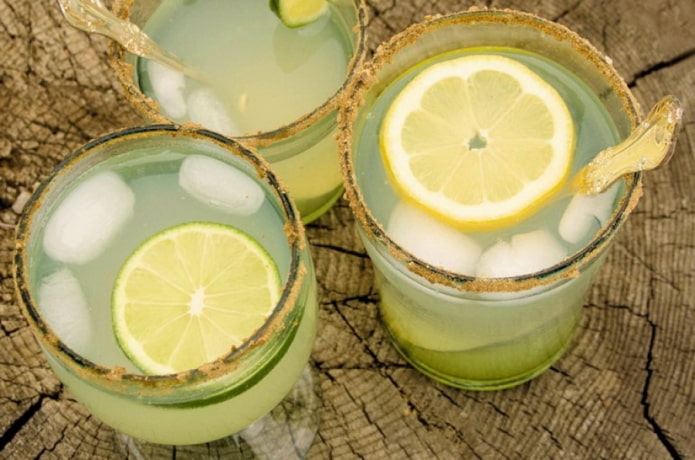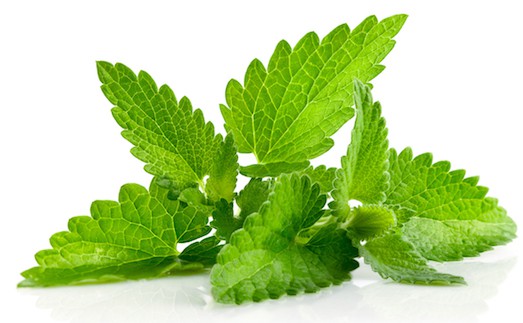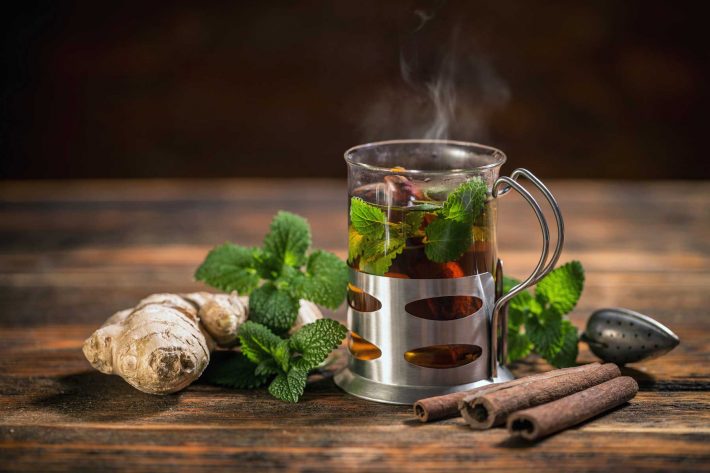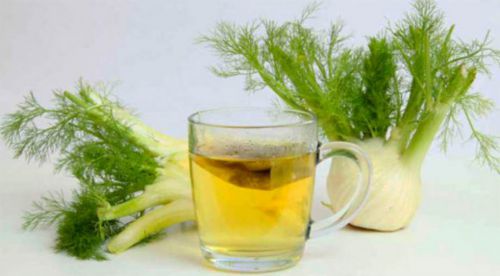Where do capers grow? Capers what it is, how they look and what they eat.
If you are an experienced culinary specialist, you most likely heard this name, if not, then the information provided will fully answer the question: what are capers?
Capers - what are they, how do they look, and what do they taste like?
Caper is not a fruit or vegetable, it is a plant. Shrub on which these small, unblown buds grow. What do capers look like? They are green in color with petals that are just starting to develop.
The buds are picked by hand, fresh they are inedible, therefore they are canned, pickled and used as a food additive.
They are very salty, they contain a lot of sodium, so they must be soaked before use.
Their taste is bright, spicy, slightly tart and sour. There is also a taste of mustard, as there is mustard oil in the stems.
How and where capers grow - an excursion to botany
How do capers grow? This is a small spiny shrub with long branches that spreads. He has very beautiful flowers. And he lives mainly in the cracks of walls or between stones.

There was a plant from Asia and the Mediterranean, and the main suppliers of capers are Italy, the Balkans, Italy, North Africa. It grows wild in Ukraine, in Central Asia and in the Caucasus.
What are capers in cooking?
Pure capers are not consumed. They are a seasoning or food supplement. Due to the pronounced taste, they saturate the dish, making it more vivid.

They are added to meat, fish and vegetable dishes. But not in whole form, but cut into small pieces or grinding them. This is done to mitigate a very sharp taste. It is recommended to put them when the dish is almost ready, since during the heat treatment the plant loses its properties.
If you like spicy dishes, you can make sandwiches with capers, bake pies and even desserts. They are an indispensable component of the Georgian hodgepodge.
An ideal combination is capers with anchovy or herring. In harmony with ground black pepper, fresh tomatoes and cheese.
The benefits of capers for the human body
The benefits of capers for the human body are quite large, because they are antioxidants, so it is recommended to include them more often in the diet.

- In addition, they contain many vitamins, phytonutrients, which have a beneficial effect on the immune system.
- Included in the routine strengthens the capillaries, prevents the formation of blood clots, improves blood circulation. Sometimes they are used for varicose veins and hemorrhoids.
- Niacin can reduce bad cholesterol, and quercetin has an anti-inflammatory, antibacterial effect.
- They are also used to eliminate flatulence, heaviness in the abdomen, and stimulate appetite.
- Capers treat burns, eliminate bleeding and kidney disease.
Popular recipes with capers

Of course, for how many years this plant has been growing, a lot of dishes have already been invented, but among them there are the most popular and delicious ones that you need to try at least once.
Pickled capers at home
The easiest cooking option for this plant.



Required Products:
- a spoon of salt;
- one onion;
- 500 grams of fresh capers;
- half a lemon;
- two cloves of garlic;
- vinegar - 0.3 liters;
- two dried cloves;
- a few peas of black pepper.
Cooking process:
- Sort out the buds well, there should be no spoiled ones among them, rinse and leave to dry so that the excess liquid is gone.
- Finely chop the onion and garlic, turn the lemon into slices and send these ingredients to the pan. Pour vinegar, all the spices and salt there.
- This mass, constantly stirring, bring to a boil, but only over medium heat, and then remove and wait until it cools.
- We place capers in a sterilized jar, so that they are almost to the neck, pour the prepared brine, close the lids and leave for 2-4 weeks, after which they are ready for use in other dishes.
Solyanka
Solyanka with capers is a dish that came from Georgia. If we used to cook it with pickles, then there, and in the countries of Europe, they are completely replaced by green buds.

Required Products:
- 0.4 kg of various smoked meats;
- salt, pepper and other spices;
- a spoonful of sugar;
- half a kilogram of beef;
- onion and carrot;
- bell pepper;
- three tomatoes;
- 200 grams of capers and as many olives;
- four potatoes.
Cooking process:
- From the specified amount of meat, you need to cook the broth, get it, cut into small pieces and return it back to the pan.
- Put potatoes chopped into squares there, continue to cook.
- Fry chopped onions, grated carrots and capers in a hot pan until soft.
- Add there, peeled and mashed tomatoes, a small spoonful of sugar, leave to simmer for about 10 minutes.
- The resulting mixture is sent to the broth, and in a pan we fry the smoked and cut into small squares smoked.
- We also put them in a pan and put chopped pepper in the same place.
- It remains to put the olives, they can be dipped in the dish whole or by dividing into parts. Add spices to your taste, you can cut a little greens.
- Wait for the boil, remove from the stove and let stand for about 30 minutes, after which you can serve.
Delicious Salad Recipe
Salad with capers is a very unusual dish, but it is due to these buds that the taste is spicy, refined.
Required Products:
- 2 eggs;
- walnuts - two tablespoons.
- 0.3 kg of chicken;
- two tablespoons of sour cream;
- seasonings and spices;
- a spoon of vinegar;
- 2 large spoons of capers.
Cooking process:
- Put the fillet in a pan with water, bring to a boil and boil, do not forget to season with spices. We get out and wait until it cools down.
- Eggs also need to be brought to readiness, they must be hard boiled.
- Nuts need to be chopped, this can be done with a blender, but not so that it is completely porridge, they should be felt a little. Better of course just cut with a knife.
- In a salad bowl we put the chicken into cubes, eggs in squares, capers from which we pre-drain the liquid and sprinkle everything on top with nuts.
- We season the dish with a mixture of sour cream with vinegar, salt, pepper and other spices to your taste.
Unusual pasta with capers
A combination that few will leave indifferent.

Required Products:
- 100 grams of tuna;
- 200 grams of tomato in juice;
- bulb;
- clove of garlic;
- 0.3 kg of paste;
- two small spoons of capers;
- spice.
Cooking process:
- Sliced \u200b\u200bgarlic and onions are sent to the preheated pan, fry until beautiful.
- Put tomatoes there, turn on a low heat and simmer for several minutes.
- Then put the indicated amount of tuna and capers there, hold for another five minutes, without increasing the heating force.
- Separately, cook the pasta in a saucepan, put it on a dish and season with cooked sauce.
Classic caper sauce
In addition to independent dishes from buds, you can cook a delicious sauce.



Required Products:
- 2 tablespoons of capers;
- clove of garlic;
- juice from half a lemon;
- mustard - two small spoons;
- mayonnaise 100 grams;
- fresh greens.
Cooking process:
- Capers cut into small pieces. We also do with herbs and garlic. 0.4 kg of pizza dough or ready-made base;
- a large spoon of capers;
- ketchup or tomato sauce for spreading;
- 2 tablespoons of olives;
- 0.2 kg of smoked sausage;
- three tomatoes;
- mozzarella or other cheese - 150 grams;
- sweet pepper;
- canned corn - two tablespoons.
- First, prepare all the ingredients for the filling. Cut the sausage into thin strips, pepper slices, tomato into slices, divide the olives in half, and grate the cheese on a coarse grater.
- If you have dough, then you need to roll it into a suitable size, if the base is already ready, then you can start to coat with ketchup or tomato sauce.
- On the dough we put all the crushed ingredients for the filling, along with the washed capers and corn. Last should be the tomatoes, which are covered with cheese. Optionally, you can add greens. Bake at 220 degrees for 12 minutes.
Cooking process:
How to replace capers, several alternatives
If you can’t find green buds on sale, but really want to cook something with them, then you can try replacing them with something else. For example, olives or salted gherkins are considered a classic substitute.
Caper of Nasturtium
Required Products:
- 0.1 kg of nasturtium seeds;
- five peas of black pepper;
- salt to taste;
- 0.2 liters of white wine vinegar.
Cooking process:
- Make crushed pepper, vinegar and salt marinade, mix all the ingredients and cook over low heat for about 10 minutes.
- Rinse the seeds, place in a jar, fill with marinade, cover with a lid, put in storage. They will be ready in three months.
Capers don’t eat fresh, they have a bitter taste
A plant with an interesting name, caper blooms with delightful large white flowers. But if you pick the buds that have not yet opened, then know that capers are in your palm. According to information from the botanical encyclopedia, the caper is called Capparis spinosa in Latin. The buds of the plant are small in size, greenish-brown in color. When canning, the color is preserved.
How capers grow
This creeping shrub with a high level of endurance - not every flower will feel fine on bare rocks, takes long roots that allow you to break through the smallest cracks in the stones. After flowering, berries appear on the plant.
Where capers grow
A prickly caper came to all residential corners of the world from the northern part of Africa, first conquering southern Europe, and then exploring the Mediterranean countries, Asia, India, the Caucasus and the Crimean rocks. This spice is growing in North America.
Blooming caper flower
Nutrient composition, calorie content and ways of eating capers
To the delight of many people, capers are classified as diet foods with a low calorie level - only 15–23 kilocalories per 100 g! Unbroken buds of caper in their composition have the lion's share of fiber, as well as vitamins of groups B, A, C, E and organic acids, up to 3% fat, 25% protein, trace elements. Buds are used only in pickled or salted form. Fresh product is very bitter and not very palatable.
What do capers eat?
Even ancient cooks began to add pickled or salted buds to many dishes. Thanks to this neighborhood, the taste of many dishes is significantly improved, since capers bring notes of spiciness, piquancy and some sourness.
Judging by numerous recipes, capers are wonderful complement fish dishes, hodgepodge, pizza, are used as an independent salad dressing. Italians prefer to add this piquant product to pasta and even martini. And the well-known tartar sauce also has these buds in its recipe. But caper bud buds are best combined with olives.
TIP!
Better to add the buds before the dish is fully cooked, as vitamins and oils of the product are preserved.

The smell and taste of capers
The similarity of capers to taste with pickled cucumbers is interesting, but the difference is that the former do not crunch and have a pronounced piquant flavor. Tartness, pungency, brackishness are complemented by a certain spicy aroma.
Caper love in many countries
Although this product is very common today, it occupies a leading position in the kitchens of Mediterranean countries. Perhaps it is their inclusion in the composition of many recipes that attracts tourists to the cuisine of Italy and Greece.

Caper fruit
Caper: benefit and harm to the body
Before you decide if you want to taste dishes with pickled buds, let's figure out how capers are useful and whether there is harm from them.
Kaportsy, as the Greeks call them, are considered a strong antioxidant, as well as a product that improves blood circulation. From the use of dishes with caper buds, the appearance of the skin and hair improves. The iodine, zinc and iron included in the product will help with a deficiency of these trace elements in the body. But these are not all the useful properties of capers. Caper oil is included in the composition for protecting against ultraviolet radiation and moisturizing the skin.
ATTENTION!
Drinking even a small amount of caper buds promotes appetite.

Can kaportsy do harm? They can, since the product is classified as an allergen. It is better to exclude it from recipes for pregnant and lactating women. Do not be zealous with pickled buds for people who have a stomach ulcer and gastritis.
Food lovers who are happy to absorb anchovies, herring and capers together can notice high blood pressure. This contributes to the total large amount of salt in these products.
Choosing Good Capers
Gourmets divide this product into four types by quality. The best are the smallest smooth buds, measuring 6 mm, maximum 7. As a rule, jars with the name Non pareil with such contents are the most expensive.
TIP!
The smallest bud balls contain more vitamins.

The second place is held by Surfines. They are the largest by a millimeter in diameter. But they already have differences in taste from the most tiny and tender. Fines - buds with a diameter of 1 cm. Jars with centimeter capsules are already significantly inferior in price. The largest, about 1.5 cm, are called Grusas.

Different types of capers
What are capers in cooking?
Culinary art is truly amazing, and capers added to certain dishes dramatically change their taste for the better. Be sure to know some of the subtleties of using these wonderful dark green balls. For example, pickled caper buds for chopping sauces and salad dressings are finely chopped. Thus, their taste and aroma is fully revealed.
TIP!
Following the recipe, take a smaller amount of food for the first time. So, familiarization with a new type of food will be more successful, given the fact that allergies are possible.

If the food is cooked, flower buds should be added at the very end of cooking. So you save both color, and taste, and more vitamins. If there is a choice, then the best solution is to add kaportsy directly to the finished hot dish, 15 minutes before serving.
IMPORTANT NUANCE!
When preparing recipes containing capers, salt the dish more carefully.

What is made from capers
Where do capers add, because they cannot be a separate dish? Their addition to some products dramatically changes the recipe and perception of food.
Ideal addition to meat and fish dishes. Italians cook stewed rabbit in a special way, always including sun-dried tomatoes, olives and capers in the recipe.
There are a lot of interesting salad recipes where you can add this useful and piquant product, striking the household with an unusual new taste.
How can you replace capers
Food lovers will say that they are irreplaceable. If you are not considered a connoisseur of caper dishes, then the most optimal substitute will be nasturtium seeds, although they are also most likely a rarity for Russian cuisine. Gherkins and green olives are similar in taste to capers.
But if one could replace one product with another completely, then there would be no our article.

In some recipes, capers can be replaced with cucumbers
Pickled Capers Recipes
For the first acquaintance with a new product, it is better to opt for the low-calorie and rich in protein, the most delicious, in our opinion, salad recipe with tuna and capers. To prepare it, you need the following set of products:
- green lettuce - half of the beam;
- canned tuna - 1 can, about 130 g;
- pickled capers - 20 g;
- salt - to taste;
- lemon juice, olive oil - 2 tbsp. spoons;
- medium sized cucumber;
- parmesan cheese - 50 g
Salad is prepared by analogy with Caesar. At the bottom of the plate lay leaves of lettuce torn by hand, chopped cucumber and sprinkle with grated cheese, capers and slices of tuna. They season this healthy salad with olive oil mixed with lemon juice. Only after this they interfere, try the salad and add salt.
There are many other recipes with pickled capers, try to cook them and experience a touch of Mediterranean cuisine.
Cultivation of capers in the country - is it possible?
Despite the unpretentiousness of the culture and very uncomfortable conditions for the growth of caper in natural conditions, they are practically not common with us. Nevertheless, if you decide to plant such a plant in the country, then choose a place near the stone wall. This will provide some protection from the wind.
The caper has long roots, they can reach 15 m! Keep this in mind when planting, although the shrub itself grows a very long time.
The plant is not afraid of heat, + 40 ° C will not cause the caper to wither, but a temperature below zero can cause the Mediterranean guest to lime. Consequently, areas where caper cultivation is possible should be arid and located as far south as possible. The first years, the plant can feel great in the container, and winter in the apartment. However, as it grows, you have to plant a bush in the ground. The most sore point will be wintering.
If you desperately want to try to grow this southern culture, then it is worth considering how you will shelter and protect the bush in frosty winters.
Where to buy capers
If you decide and do not know where to buy capers, then we will answer: they are in almost all major grocery chain stores on canned food stalls. There is some choice: pickled capers in wine vinegar, canned, in salt, prepared canned dish.
Price for a can of capers
The price range depends on factors such as bud size, manufacturer, marinade, and supplier. The spread in prices for a can is quite large: from 70 to 500 rubles.
It is always worth getting to know something new. Today you got information about capers, maybe you should try them and diversify your menu. We hope that your feedback will help other people decide whether to buy capers for food or try to grow them yourself.

Fresh caper buds
Capers are unblown buds of a prickly shrubbery caper plant.
The shrub itself is insanely beautiful - despite the fact that they live in rather harsh conditions, the flowering of the bushes is magnificent! From above they are covered with flowers, and they bloom all summer!
Caper refers to perennial shrubs, grows in the Caucasus and Crimea, wild species can be seen in Dagestan.

The kidneys have a tart taste with a rich aroma.
Caper is a thermophilic plant that belongs to the caper family.
More than three hundred species of plants exist at the moment: creepers, perennial grasses, shrubs, shrubs. Mostly grow in the wild in Central Asia, the Mediterranean, Crimea, India, in the Caucasus.

It is grown mainly in Italy, Spain, France.
The caper is used to create landscape designs, and also used as food. Caper buds are rich in vitamin C, vitamin P (routine).
In foreign folk medicine, capers are used as a means of lowering blood pressure, healing wounds, calming nerves.
Before eating, capers are salted with olive oil or marinated in wine vinegar.
They are used pickled or canned.

The capers prepared in this way have a dark green color and a tart, moderately sharp or bitter sour-salty taste.
The buds are harvested from the end of spring to September, several times during the summer by hand. After collecting the buds for 2 weeks, the plant is covered with new buds.

In one season, from one bush you can get up to 3.5 kg of buds.

How to grow a caper
Capers are unpretentious plants, but they are little grown at home. This is due to the fact that the bush reaches large sizes, for example, the root of an adult plant can reach fifteen meters.
At the same time, it grows slowly and can grow for a long time in a pot of small diameter. After you need to plant such a plant in the ground, and leave layering in its place.

They are used in cooking, medicine and as folk remedies for the treatment of diseases.
Capers can be grown in arid areas, they are photophilous. If you plant capers in one place without replanting, they will bear fruit for up to 15 years in a row.

Propagate the plant by layering, parts of the bush or seeds.
Sowing seeds should be done in a greenhouse or directly in the open ground.
Sowing is carried out in the spring, from March to May. The distance between plants should be at least 40-50 cm, and the row spacing of 70 cm.
A fast method of reproduction is considered the method using layering.
It requires open sunny areas and the absolute absence of groundwater.

Fertile soil is not so important for it, it can grow on heavy lands, in crevices of walls. The shrub has a strong rhizome, and can withstand even severe frosts. The plant is easily grown in one place for about 15 years, without requiring constant transplants.
Sowing seeds can begin in March or early April. For excellent growth, plant it in a greenhouse or on sandy soil, to a depth of about 30 cm. Aisles should be about half a meter - a meter, and the distance between plants should reach the same size.

No great seedling care required - only weeding and watering is enough.
The most important and, in principle, what will ensure the yield is to obtain seedlings. The main problem of capers is that they do not rise well and take root for a long time. Only after a couple of years you, at the place of planted plants, can you see attractive flowering shrubs!
The caper has beneficial properties. If you will boil the roots of a plant, then this decoction can be used for allergies, rheumatism, paralysis, torn branches - excellent antiseptics and agents that disperse bile.
Juice of flowers and flower buds themselves stimulate appetite. Small capers are also useful in that they are anti-inflammatory.

Those who are far from eastern or Mediterranean cuisine may not know what capers are and what they look like. However, today the mysterious product is freely sold in supermarkets and getting to know it better is not difficult.
In cooking, caper buds, which are consumed exclusively in salted or pickled form, are better known. They are sold in glass jars and have such a characteristic appearance that it is not possible to confuse them.
Berries are eaten much less often and not only processed, but also fresh.
How capers grow Botanical certificate
The creeping bush of caper thorny (Capparis spinosa) with beautiful, large pink and white flowers is grown not only to produce fruits, but also as an ornamental plant in demand in landscape design.
The homeland of this exotic representative of the subtropical flora is considered to be the Mediterranean., although it is also common in Asia, Crimea and the Caucasus. Almost all parts of the plant: roots, berries, buds, young shoots, flowers and seeds are used in folk medicine.
It is believed that the name of the shrub comes from the island of Cyprus. The caper is unpretentious - it easily withstands the scorching southern sun and is not “afraid” of rocky soil. At the same time, the plant blooms profusely throughout the summer and is considered a magnificent honey plant.
The benefits and gustatory qualities of capers were known as early as 3 millennium BC. e. This unique spice is mentioned in the Epic of Gilgamesh, which is attributed to the oldest literary monuments of our civilization.
Besides wild capers, there are varietal crops with improved nutritional properties. Industrial production of gourmet spices involved in North Africa, Spain, Italy and France. The most delicious buds come to us from the island of Thira in the Aegean Sea, where the soil is richly fertilized with volcanic ash.
Until today, the kidneys and fruits of capers are harvested by hand, in dry, clear weather. The buds are sorted by size using a sieve: specimens that do not reach a diameter of 1 cm, with a dense structure have the most delicate and delicate taste. And appreciated by foodies, respectively.
Berries are oblong pods with a reddish softness, their sweetness resemble a watermelon. They are eaten raw or made jam. But fruits are pickled very rarely, because their taste becomes too saturated and not everyone likes it.
What are capers in cooking
For cooking, use, first of all, immature buds. They are called capers in culinary recipes.
Fresh buds have a pronounced bitter taste and are not suitable for food. Therefore, immediately after collection, they are wilted in the open air, and then at least 3 months are kept in saline with the addition of either vinegar or olive oil. Sometimes capers are placed in glass containers and simply sprinkled with salt. With this method of preservation, the product can be stored for several years.
The best variety of capers is “non pareil”, with a diameter of buds up to 7 mm. The largest specimens, called "grusas" reach 14 mm or more. They are slightly tart, with a bright spicy aroma, at the same time resembling gherkins, olives and mustard in a very complex, but pleasant combination.
In our stores, the Mediterranean delicacy is sold pickled only in vinegar, without the addition of oil. From this, the taste of the spice deteriorates, but the shelf life is significantly increased.
Situation can be improved by caper bay own marinadeprepared according to the recipe below.
- In olive oil, add oregano, thyme, oregano, basil and rosemary and warm the mixture in a water bath so that the herbs give off their aroma.
- We extract the kidneys of the caper from the vinegar solution and rinse thoroughly.
- Put the product in a jar again and fill it with warm, aromatic oil. When the marinade has completely cooled down, preservation for 2 to 3 days is placed in the refrigerator, after which culinary masterpieces are created with its help.

Fruits are used to decorate meat and fish dishes, added to hodgepodge. You can effectively serve the tongue with boiled potatoes in the form of a snack, garnishing with the fruits of capers. And a simple dish will immediately transform:

Benefits and contraindications
Initially, various parts of the caper, including flower buds, were used as medicine.
Official medicine recognizes that the plant effectively fights oncological and cardiovascular diseases, normalizes the activity of the thyroid gland, eliminates inflammatory processes, including chronic ones, and reduces pain.
Useful properties of capers
- The caper buds contain almost all vitamins and minerals. They are especially rich in routine, which makes blood vessels more elastic, prevents the formation of blood clots, improves eyesight, stabilizes heart pressure, and also improves immunity.
- And capers are a powerful antioxidant that, when used regularly, can prolong our youth and preserve our beauty. Nutritionists recommend consuming a product with meat in order to neutralize oxidative processes caused by protein foods.
- Flavonol quercetin, which is also found in buds, according to scientists, is able to withstand the formation of malignant tumors at the genetic level. It has already been called the “anti-cancer bomb,” which helps primarily with problems with reproductive organs in men and women. In addition, the substance reduces the risk of allergic reactions, has a beneficial effect on the respiratory system and intestines.
- With a poor appetite, a few capers should be added to the dishes - and the food will again be a pleasure. Healing seasoning will help to establish digestion and cleanse the body of toxins.
- Regularly using caper kidneys, you can lower blood sugar, which is why the product is also useful for diabetics.
- Strong bones, luxurious hair and fresh, clean skin - all this is guaranteed to fans of capers. Dermatological diseases will remain in the past if you include the Mediterranean delicacy in your menu.
In addition to useful substances, buds in large quantities contain sodium, an excess of which can cause malfunctions of the heart, severe swelling and nervous disorders. To avoid negative consequences, pickled or salted capers are soaked in water and only then put into dishes.
The product is not recommended for pregnant and lactating women.
What do capers eat?
Since the seasoning popular in the Mediterranean is not well-known with us, the hostesses are lost, not knowing what dishes and how to add it.
In this case, it is better to wait a bit with culinary experiments, but there are products that are guaranteed to combine with spicy capers. It:
- Any meat (chicken, beef, veal, lamb, pork) in the most different processing: fried, stewed or boiled.
- Seafood
- Vegetable salads
- Multicomponent sauces, including mayonnaise, tartar and bechamel.
- Pickled Cheeses
- Spicy greens: parsley, dill, tarragon, celery
- Pasta
- Oil: olive or cream
When choosing dishes with capers for your menu, do not try to come up with something exotic. The most familiar soups, stews and salads will “sound” differently if you add a little of this product to them.
Note that fragrant buds are an indispensable component of classic olivier and hodgepodge. For example, here is a fish hodgepodge with capers: 
Refined spice is not necessarily added in its entirety - it is often crushed or even ground to a mushy state. So seasoning will be able to evenly distribute among other ingredients and emphasize, but not interrupt, their natural taste.
Here are some characteristic interesting recipes.
Hodgepodge
This thick appetizing soup is appreciated by gourmets for its unusual, rich taste and ease of preparation. The secret of the hodgepodge is in a correctly selected combination of meat products, rich, concentrated broth and special “zest” giving their own unique flavor. Among these "secret" ingredients are capers.
So, write down the recipe.
We will need:
- 300 g of meat (pork, beef or chicken to choose from)
- 700 g mix of hunting sausages and gourmet smoked meats
- 150 g pickles (better than barrel)
- 100 g brine
- 2 medium onions
- handful of capers
- 50 g olives
- 1 tbsp. l vegetable oil
- 50 g tomato paste
for submission:
- green onions
- 1 lemon
Cooking
- Boil the meat until cooked. Put it in cold water to make the broth saturated.
- Cut the chilled meat into thin strips.
- We do the same with smoked meats and sausages. Then lightly fry the slices.
- In a heated frying pan, brown the chopped onion, add chopped cucumbers and all together we’ll sweat for about 5 minutes.
- Pour the tomato into the vegetables and simmer another 10 minutes. As a result, we get a dressing that should be added to the meat broth and mix thoroughly.
- The base for the hodgepodge is ready. We add smoked meats, meat and cucumber pickle to it, bring to a boil and keep it on fire for 5 minutes. Before turning off, put the olives and finely chopped capers.
- Solyanka is served in portioned plates with lemon slices and green onions. If desired, you can season the soup with sour cream and any herbs that you like.
If you are planning to cook, study ours.
Italian caponata
We are talking about vegetable stew, which is cooked in Sicily. It is served as a side dish for meat or an independent appetizer in hot or cold form. Like all Mediterranean dishes, caponata is very light, healthy and incredibly tasty. 
We will need:
- 400 g canned tomatoes
- 700 g eggplant
- olive or any odorless vegetable oil for frying vegetables
- 3 tbsp. l red wine vinegar
- 3 to 4 cloves of garlic
- a bunch of fresh basil greens
- 1 onion
- 2 tbsp. l capers
- pine nuts for the topic
Cooking
- Finely chopped eggplant, half onion rings and garlic, passed through a press, fry in warmed olive oil, stirring constantly, for about a quarter of an hour. The fire should be light so that the vegetables do not burn.
- Remove the peel from the tomatoes, cut into cubes and add to the rest of the ingredients. There, we add the brine, vinegar and capers remaining in the bank.
- Stew under the lid for 15 minutes, stirring occasionally. Pepper and salt are best seasoned at the very end of cooking, then put the chopped fresh basil. Mix everything and remove from heat.
- Separately, fry the nuts a little in a dry frying pan. They sprinkle the finished dish immediately before serving.
Salad with capers for a slim waist
Great dinner for those who follow the figure and want to eat right. The combination of tuna and baked pepper can be considered a classic, while the salad, like any dish where capers are added, has an exotic touch.
We will need:
- 8 large bell peppers
- 400 g of tuna in its own juice
- 1 small red onion
- any lettuce (arugula, iceberg, romaine, etc.)
- olive oil
- 1 tbsp. l lemon juice
- 1 clove of garlic
- small bunch of chives and parsley
- 2 tbsp. l capers
- salt and pepper to taste
Cooking
- Bake peeled and halved peppers in an oven preheated to 200 ° C for 10 minutes, until the skin turns black. We shift the hot vegetables into a bag, tie and wait 15 minutes.
- Next, peel the peppers, cut into large strips and place in a salad bowl.
- There we add the onion chopped with thin rings. We make dressing from garlic, lemon juice and oil passed through the press, pour vegetables with it.
- Now it’s the tuna’s turn. Cut it into medium-sized cubes and mix with the rest of the ingredients. Sprinkle with chives, chopped parsley and chopped capers. Pepper and salt.
- We spread our dish on washed lettuce leaves and serve.
Watch the video on making spicy sauce with capers for serving:
How to replace capers in dishes
The caper buds are exotic for us, not always available due to the high price or other reasons.
If you want to add piquancy to dishes, you can find “native” products that are similar in taste. For example, everything in the same Olivier capers have long been replaced by pickles.
In this case, it is more correct to take gherkins - cucumbers of small-fruited varieties, collected with slightly immature eyelids and pickled.
Olives are added to meat or fish dishes (their taste is more like capers than olives).
For salads, pickled nasturtium pods or pickles are often used - a spicy mixture of small vegetables.
About the beautiful "fiery" flowers that can be found in almost every front garden or in city flower beds, I want to mention especially.
Nasturtium is native to South America, where its buds and unripe fruits have been used for centuries as a seasoning. In our country, this is more of an ornamental plant than a spice intended for cooking.
Nevertheless, pickled fruits and buds of nasturtium taste and useful properties are not inferior to capers in any way, but will cost several times less. Will we cook? 
Caper of Nasturtium
We will need:
- ½ liter of water
- 1 tbsp. l salt (without top)
- 1 tbsp. l Sahara
- 2 - 3 tbsp. l 9% vinegar
- allspice peas
- 2 clove buds
- bay leaf
Cooking
- Add boiled water to salt, sugar, spices, you can additionally take a mixture of "Provencal herbs". At the very end, pour in the vinegar.
- We lower the buds or pods of nasturtium for 3-4 minutes in boiling water, remove and repeat the procedure again.
- After that, fill the product with marinade, which is filtered through a fine sieve for transparency. Cans with spices are sterilized and rolled up, stored in a cellar or refrigerator.
- Before use, “capers” are washed and placed in olive oil for several days.
World-renowned culinary experts advise at least once to try real caper buds, in which the healing properties are so surprisingly combined with a refined taste. This is in every sense a gourmet product worth adding to the family menu. Why not discover something new, especially if it is truly useful?



















